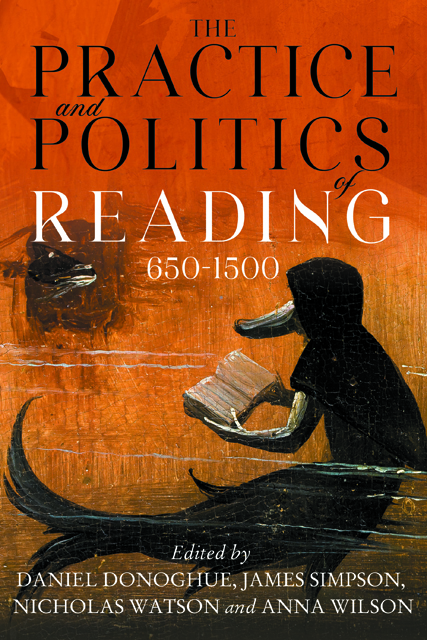4 - About Face: Addressing the Vernicle in Late Medieval England
Published online by Cambridge University Press: 11 January 2023
Summary
This essay explores the responses elicited, and so modeled, by the veronica, or vernicle as it is often called in Middle English: that is, the cloth believed to have taken a miraculous impression, a bodily trace, of Christ’s face when it was offered to him on the road to Calvary by St. Veronica. As an image and as an object, the veronica was understood to provide unmediated access to the physical presence of Christ, and this material immediacy hosts and is sustained by the devotee’s affective engagement. This affective response – communicated, represented, and elicited by the vernicle through its formal, material, performative, and representational qualities – is staged and theorized in devotional texts related to the object’s cult. This essay explores some of these texts, including prayer poems and a medical charm, which offer an alternative to the familiar kernel/shell model by which medieval Christian “reading cultures” are often characterized. As we will see, the vernicle encouraged a form of engagement rooted in immediacy, affective response, and self-reflection rather than discovery of hidden meaning.
These qualities identify the mode of readerly response limned in vernicle texts as a premodern comparandum for models of affective, descriptive, and reparative reading that Sharon Marcus and Stephen Best grouped together under the broad rubric of “surface reading” in their influential 2009 meditation on current critical practice. Linked broadly by their deviation from – or outright rejection of – post-structuralist “depth hermeneutics” in its several varieties, surface reading is associated with cognate or affiliate categories including description, immediacy, and affect that also characterizes the modes of response staged in vernacular meditations on the vernicle. Where Best and Marcus reinforce a spatial paradigm by conceptualizing surface reading primarily in contrast to metaphors of critical “distance” and interpretive “depth,” however, vernicle literature conceptualizes surface reading through the temporality of becoming. If surface reading today orients audiences to the text itself, which they are enjoined to take “at face value” through attention to material, formal, or representational detail, Middle English vernicle texts model surface reading as an “about face” that orients the reader toward their future self.
- Type
- Chapter
- Information
- The Practice and Politics of Reading, 650-1500 , pp. 84 - 109Publisher: Boydell & BrewerPrint publication year: 2022

